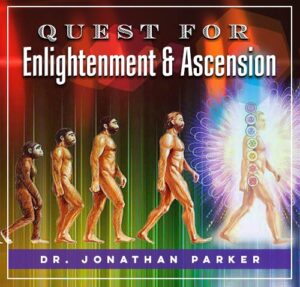The Pyramid Texts: Ancient Egyptian Rituals

Looking for more amazing products? Check out our online store and explore our collection here! Happy shopping!
Before diving in, please note: This post is for informational purposes only. If you’d like to know more about how we approach topics, feel free to check out our friendly Disclaimer Page.
Hey there, amazing readers! 
We’re committed to delivering quality posts, and your support (even just sticking around despite the ads) means everything to us. So, bear with us, and thanks for helping us keep the good vibes rolling. Now, on to the fun stuff!
TRANSLATE BUTTON AT THE END OF THE ARTICLE
The Pyramid Texts: Ancient Egyptian Rituals
Introduction to the Pyramid Texts
The Pyramid Texts are a collection of ancient Egyptian religious texts that were inscribed on the walls and sarcophagi of pyramids during the Old Kingdom period (ca. 2686-2181 BCE).
These texts are considered to be the oldest known religious writings in the world.
They were primarily found in the burial chambers of pharaohs, specifically in the pyramids of the Fifth and Sixth Dynasties.
The Pyramid Texts provide valuable insights into the religious beliefs and rituals of the ancient Egyptians, shedding light on their understanding of the afterlife and the role of the pharaoh in the divine realm.
Origins and Purpose of the Pyramid Texts
The origins of the Pyramid Texts can be traced back to the royal mortuary cults of the early dynastic period.
The ancient Egyptians believed that the pharaohs were divine beings who would continue to rule in the afterlife.
To ensure a successful transition into the divine realm, elaborate rituals and ceremonies were performed, and the Pyramid Texts were an integral part of these rituals.
The purpose of the texts was to guide and protect the pharaoh’s spirit on its journey through the afterlife, providing instructions, spells, and prayers that would assist the pharaoh in achieving eternal life and divine status.
Structure and Content of the Pyramid Texts
The Pyramid Texts are organized into different utterances or spells, each with its own unique purpose and function.
The spells cover a wide range of topics, including the protection and rejuvenation of the pharaoh’s body, the pharaoh’s ascent to the heavens, and the pharaoh’s interaction with various deities and divine beings.
The texts are written in a complex and poetic form of the ancient Egyptian language, often using metaphors and symbolic imagery to convey their meaning.
The structure of the Pyramid Texts reflects the belief in the pharaoh’s journey through the different realms of the afterlife, with each utterance representing a specific stage of the journey.
Rituals and Spells in the Pyramid Texts
The Pyramid Texts contain numerous rituals and spells that were performed during the burial and funerary process.
These rituals were conducted by priests and other officiants who were responsible for ensuring the pharaoh’s successful transition into the afterlife.
Some of the key rituals and spells include the Opening of the Mouth ceremony, which involved the symbolic reanimation of the pharaoh’s body, and the Calling of the Soul, which called upon the pharaoh’s spirit to return to its body.
Other spells focused on providing protection and guidance to the pharaoh in the afterlife, such as spells for warding off evil spirits and spells for navigating the celestial realms.
Significance and Importance of the Pyramid Texts
The Pyramid Texts hold immense significance and importance in understanding the religious and cultural beliefs of ancient Egypt.
They provide a unique glimpse into the ancient Egyptian concept of the afterlife and the role of the pharaoh as a divine ruler.
The texts highlight the highly ritualized nature of ancient Egyptian society and the importance placed on ensuring a successful transition into the afterlife.
Additionally, the Pyramid Texts shed light on the complex cosmology of ancient Egypt, with references to the gods, goddesses, and mythical creatures that populated the divine realm.
Understanding the Symbolism in the Pyramid Texts
Symbolism plays a crucial role in the Pyramid Texts, helping to convey abstract ideas and concepts.
The texts use a variety of symbols, such as animals, plants, and celestial bodies, to represent different aspects of the afterlife and the pharaoh’s journey.
For example, the image of a serpent represents the god Mehen, who protected the pharaoh on his journey, while the symbol of the "Eye of Horus" represents protection and healing.
These symbols were not meant to be taken literally but were instead used to communicate deeper meanings and spiritual truths.
Role of the Pyramid Texts in the Afterlife Beliefs
The Pyramid Texts were central to the ancient Egyptian belief in the afterlife.
They provided the pharaoh with the necessary knowledge and guidance to navigate the complex realms of the divine and achieve immortality.
The texts emphasized the importance of rituals and offerings in ensuring the pharaoh’s successful journey and ultimate union with the gods.
The Pyramid Texts also conveyed the belief in the continuous existence of the pharaoh’s soul, which would be rejuvenated and sustained in the afterlife through the proper performance of rituals and spells.
Influence of the Pyramid Texts on Egyptian Culture
The Pyramid Texts had a profound influence on the culture and religious practices of ancient Egypt.
They served as a template for later funerary texts, such as the Coffin Texts and the Book of the Dead, which were used by individuals of all social classes to ensure their own successful journey into the afterlife.
Explore the Path to Spirituality and Enlightenment – Start Here.
The ideas and concepts presented in the Pyramid Texts also influenced the development of Egyptian mythology and shaped religious iconography and art.
The texts were not only restricted to the royal sphere but were also known and revered by the wider population, reflecting the importance of the afterlife in ancient Egyptian society.
Preservation and Rediscovery of the Pyramid Texts
The Pyramid Texts were carefully preserved on the walls and sarcophagi of pyramids, ensuring their survival for thousands of years.
However, due to the decline of the Old Kingdom and subsequent periods of political turmoil, the knowledge of the texts gradually faded away.
It was not until the late 19th and early 20th centuries that scholars started to rediscover and decipher the Pyramid Texts.
The French Egyptologist Gaston Maspero made significant contributions to the understanding of the texts, and subsequent archaeological discoveries and translations have further deepened our knowledge of this ancient religious tradition.
Interpretations and Translations of the Pyramid Texts
Interpreting and translating the Pyramid Texts is a challenging task due to the complex and poetic nature of the language.
Scholars have painstakingly studied the texts and collaborated to create accurate translations and interpretations.
Different schools of thought exist regarding the meaning of certain passages and the symbolism employed in the texts.
These ongoing debates and discussions contribute to our evolving understanding of the Pyramid Texts and their significance in ancient Egyptian religion and culture.
Legacy and Impact of the Pyramid Texts on Ancient Egypt
The Pyramid Texts left a lasting legacy on ancient Egypt, shaping its religious beliefs, rituals, and cultural practices.
They reinforced the divine status of the pharaoh and emphasized the importance of the afterlife in Egyptian society.
The ideas and concepts presented in the texts permeated all aspects of ancient Egyptian culture, influencing art, architecture, and religious ceremonies.
The Pyramid Texts continue to fascinate scholars and enthusiasts today, offering valuable insights into the religious worldview of one of the world’s most ancient civilizations.
Conclusion
The Pyramid Texts are a testament to the rich and complex religious beliefs of ancient Egypt.
These ancient rituals provided guidance and protection to the pharaohs on their journey into the afterlife and offered a glimpse into the intricate cosmology and mythology of the ancient Egyptians.
The texts continue to captivate scholars and provide a window into the cultural and religious practices of one of history’s great civilizations.
Through their preservation, translation, and interpretation, the Pyramid Texts offer valuable insights into the ancient Egyptian understanding of life, death, and the eternal soul.

The Enlightenment Journey is a remarkable collection of writings authored by a distinguished group of experts in the fields of spirituality, new age, and esoteric knowledge.
This anthology features a diverse assembly of well-experienced authors who bring their profound insights and credible perspectives to the forefront.
Each contributor possesses a wealth of knowledge and wisdom, making them authorities in their respective domains.
Together, they offer readers a transformative journey into the realms of spiritual growth, self-discovery, and esoteric enlightenment.
The Enlightenment Journey is a testament to the collective expertise of these luminaries, providing readers with a rich tapestry of ideas and information to illuminate their spiritual path.
Our Diverse Expertise
While our primary focus is on spirituality and esotericism, we are equally passionate about exploring a wide range of other topics and niches 

To ensure we provide the most accurate and valuable insights, we collaborate with trusted experts in their respective domains 
Our blog originally focused on spirituality and metaphysics, but we’ve since expanded to cover a wide range of niches. Don’t worry—we continue to publish a lot of articles on spirituality! Frequently visit our blog to explore our diverse content and stay tuned for more insightful reads.
Hey there, amazing reader! 
Check out our store here and take a peek at some of our featured products below! Thanks for being awesome!















